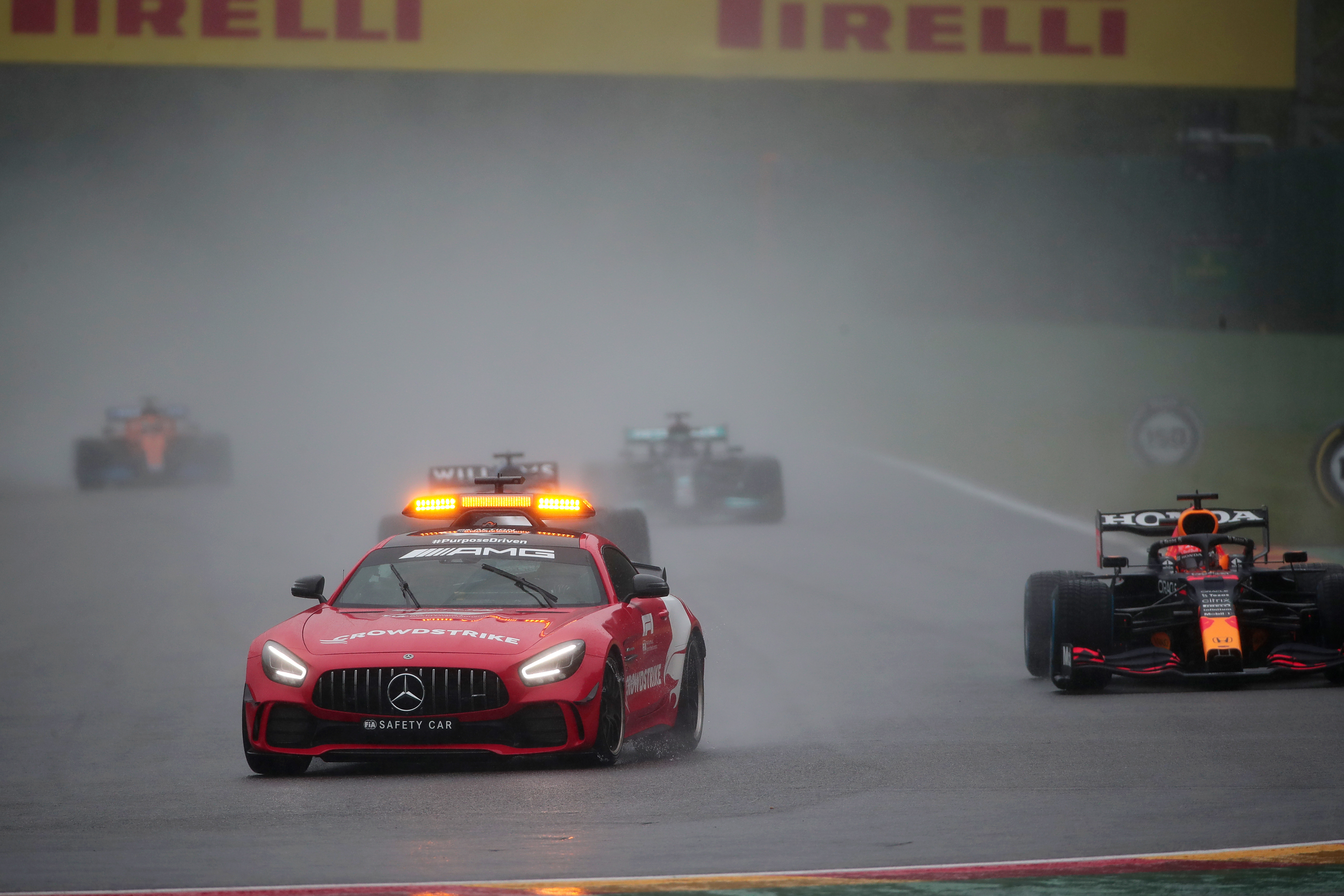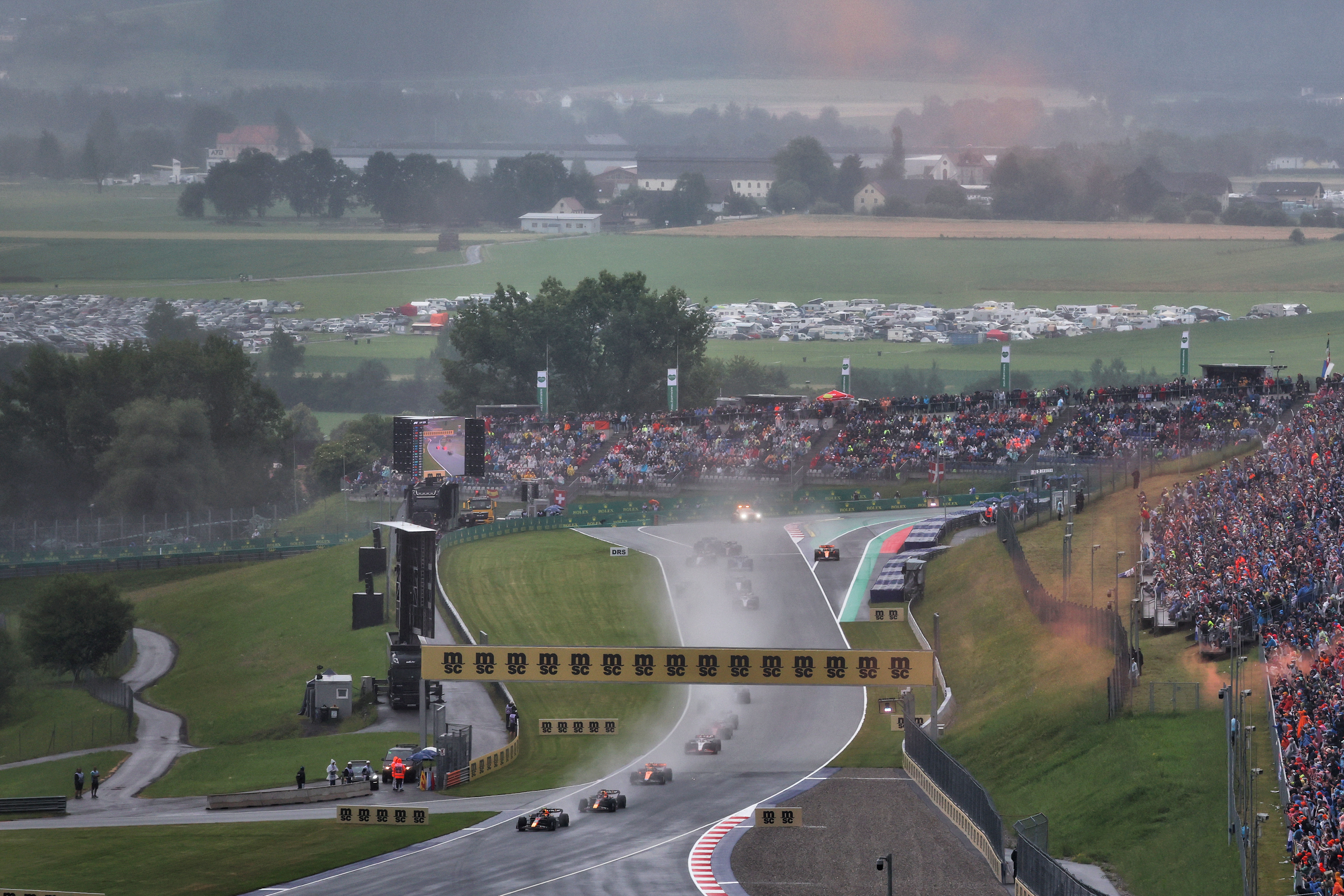Up Next

Formula 1 drivers have suggested the fatal accident that claimed the life of an 18-year-old at Spa highlights the severity of poor visibility when racing modern single-seaters in wet conditions.
Dilano van ‘t Hoff was killed in a crash in a Formula Regional European by Alpine race on Saturday when he ended up sideways and almost stationary on the Kemmel Straight and his car was T-boned.
It was similar to the accident in which Anthoine Hubert died in a Formula 2 race at Spa in 2019 but poor conditions and a wet track were a noticeable difference on this occasion.
“I don’t know if it’s the track or it’s just the speed and the visibility,” Aston Martin driver Fernando Alonso said of the Spa crash.
“I think the biggest thing is the visibility.
“It’s not that we are not able to drive in wet conditions. When we see all these red flags, delays, and the fans they get frustrated at home and things like that.
“This is the way single-seaters now work, and the visibility is so poor that we cannot drive in certain circuits at certain speeds.
“I don’t know if it’s a problem of Spa itself. I guess Monza, if you find a car in the middle of the straight, you will not see it. It’s just that poor visibility.
“We cannot afford again what happened. It has to be the last time.”

Alpine F1 driver Pierre Gasly said the crash reminded him of “situations I’ve been in, in the younger categories in Spa, in similar conditions”.
“Being fully honest, there were times when I did feel in massive danger just with poor visibility,” he said.
“And there were situations where it did feel pretty unsafe.”
Gasly’s Alpine team-mate Esteban Ocon added: “Often, those things come from bad weather, bad visibility.
“I’ve been in the exact same situation, where I was looking to see where I was going, I couldn’t see, in Formula Renault – also there.
“There’s definitely something to learn with that many cars running.”
McLaren’s Lando Norris said that people who are not driving open-cockpit cars do not understand how bad visibility is in the rain.
He drew a parallel with F1’s experience in wet conditions, citing the rain-affected sprint race at the Austrian Grand Prix as evidence of how bad visibility can be.

“When you’re not in the car you don’t realise how bad it is,” Norris said.
“Like you can’t see from here [roughly three metres] to the wall to the car ahead. You just can’t see anything.
“If there’s a car stopped, you have no chance to react. And that can happen in Spa, it could have happened here if someone went off up through Turn 2, you don’t see them until it’s too late.
“Considering so many things are done for safety, this is one of the next biggest topics I would say that needs to be changed.
“It’s a good thing that we’re doing the test in Silverstone because you may as well close your eyes half the time.”
The Silverstone test is a reference to an evaluation of F1’s prototype standard-specification wheel arches on an artificially soaked stretch of track after the British Grand Prix.
Norris’s McLaren team-mate Oscar Piastri will participate in that test.
Piastri also won the 2019 Formula Renault Eurocup in the same chassis the FR European championship uses, said visibility was “difficult” in the rain in his experience of that car.
He was hesitant to suggest it played a part in what happened, though, and instead expressed support for what the FIA has planned for F1 to combat visibility issues.
The hope is to use such wheel arches to improve visibility in wet races by reducing spray, not as a permanent addition to the cars, but as an easily attachable component to the car to be used should wet conditions arise.
Alonso said drivers needed to “trust” the FIA’s work and “be willing to test and to help them as much as we can”.






